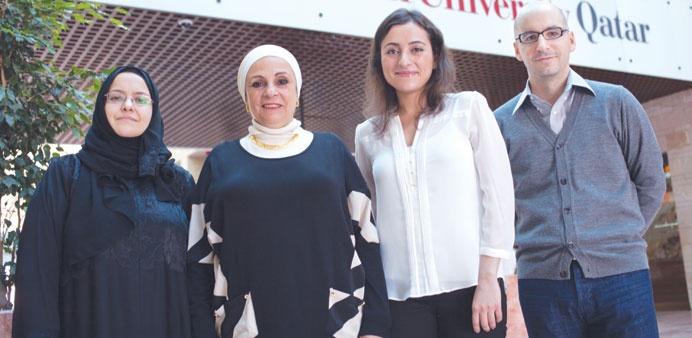A team of researchers at Carnegie Mellon University in Qatar (CMUQ) has developed a new way to teach fus-ha - Modern Standard Arabic using interactive technology.
The project, “Advancing Arabic Language Learning in Qatar,” was funded by a Qatar National Research Fund (QNRF) grant in 2009 and this year, CMUQ researchers partnered with Qatar Academy to bring their technology into kindergarten classes.
Before starting school, most Arab children do not realise that there are two variants of the Arabic language: the local dialect they speak at home and the formal version called Modern Standard Arabic (MSA). While rarely used for day-to-day interactions, MSA is the variety used in writing and formal speech.
To address the pressing need to introduce students to MSA, the team of researchers created a series of activities based on the Middle Eastern folk tale Aladdin, which they presented on large, interactive surfaces called Microsoft PixelSense. The 40-inch displays allow children to interact with the programme — and each other — at any one time.
Among the activities are an alphabet bingo, where students score points by pairing objects with their first letters, and a storyboard, where students recreate the Aladdin tale by placing scenes in the right order.
While the lessons meet Qatar’s Supreme Education Council Arabic curricula, this is the first time such an approach has been used in Qatar.
The researchers set out to not only help students learn to read and write, but also to build positive attitudes toward MSA and highlight the relationship between MSA and the local dialect.
“When I interviewed older students about their experiences learning formal Arabic they said it was like going back a century, so we knew we would have to get creative to capture children’s interest,” said Zeinab Ibrahim, a professor of Arabic at CMUQ and a renowned sociolinguist.
Jameela al-Shammari, an Arabic and Islamic Studies teacher at Qatar Academy, said the Aladdin Project, as it’s referred to at the school, has made a big difference in her kindergarten class.
“I’ve been teaching here for four years, and I always try to make my classes interesting and interactive, but it can be challenging since there are very few digital resources out there for teaching Arabic. This project has really captured the students’ interest, and working around the large screens has helped them listen, share and work in teams,” she said.
The project stemmed from a multidisciplinary team, including Ibrahim, Pantelis Papadopoulos, a research associate in computer science who specialises in educational technology, and Andreas Katatsolis, a professor of communication and design. Supporting them were Ezzohra Moufid, a research assistant at CMUQ, Sara Shaaban, a freelance designer, and Abbas al-Tonsi, a senior lecturer at Georgetown University of Foreign Service in Qatar and a consultant on the project.
The programme is also tracking the students’ progress, allowing the researchers to do an in-depth analysis at the end of the semester. There are hopes of offering workshops next year to train the other Arabic teachers at Qatar Academy, and other local schools in the future.

The team which developed a new way to teach fus-ha.
